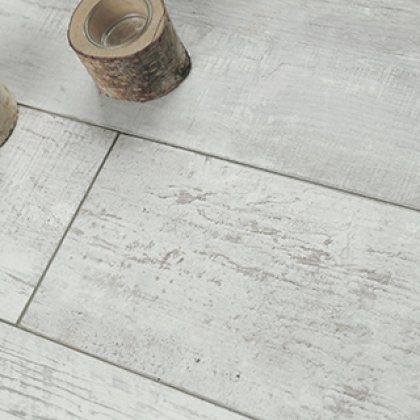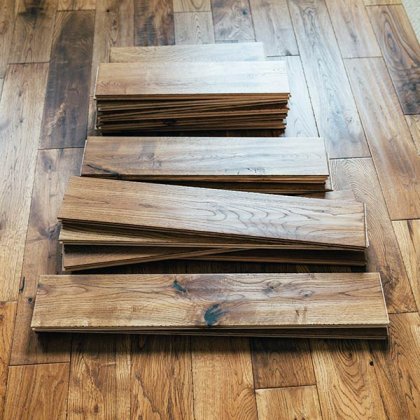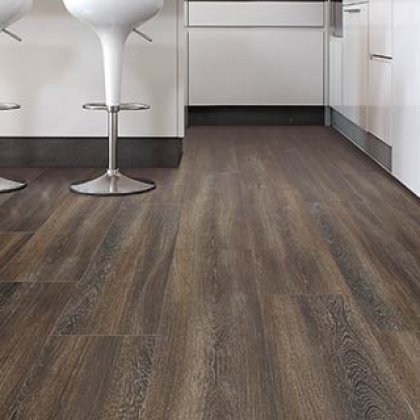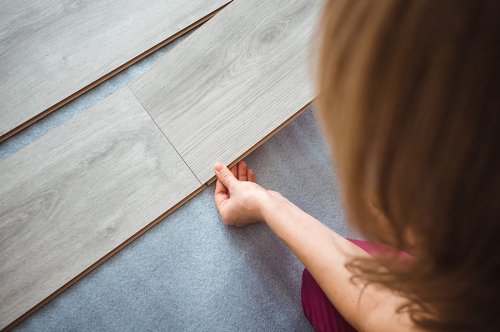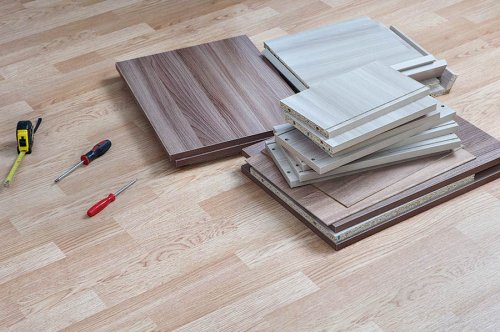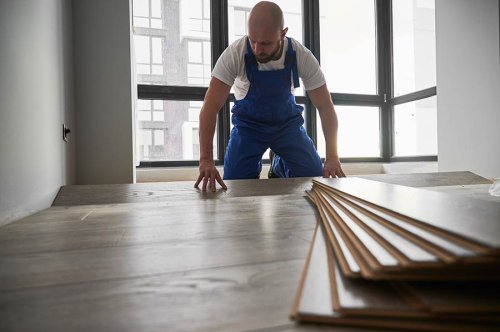Common Pitfalls: How to Avoid the Top Mistakes in Laminate Installation
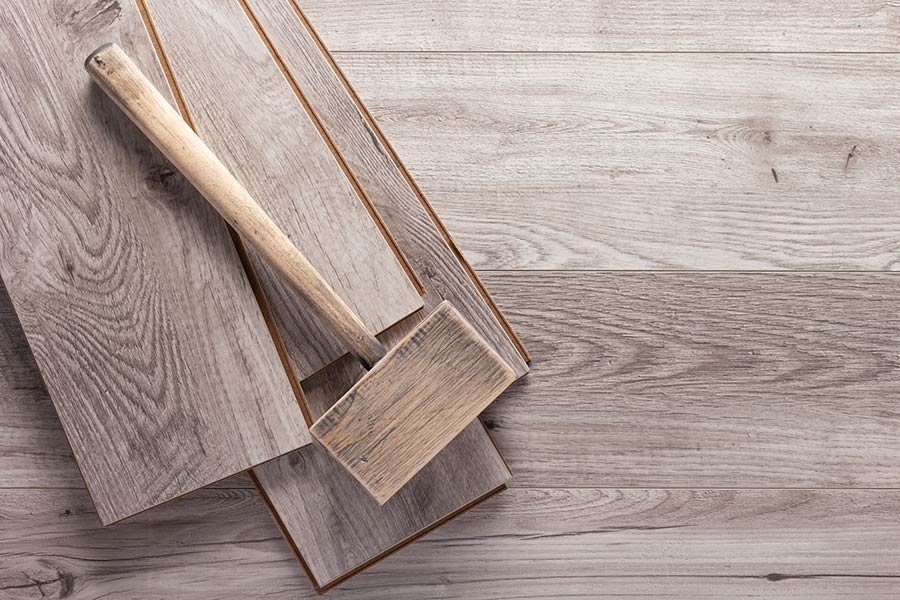
Common Pitfalls: How to Avoid the Top Mistakes in Laminate Installation
Installing laminate flooring can be a rewarding project that transforms the look and feel of your home. However, it's important to approach the installation process with caution to avoid common mistakes that can compromise the quality and durability of your laminate flooring.
In this article, we will explore the most frequent pitfalls encountered during laminate flooring installation and provide expert tips on how to steer clear of them. By learning from these mistakes, you can ensure a successful and professional-looking outcome for your laminate flooring project.
Key Takeaways:
- Proper planning and preparation are crucial for a flawless laminate flooring installation.
- The condition of the subfloor and potential moisture issues should be addressed before installation.
- Using incorrect installation techniques can result in faulty flooring.
- Ensure proper expansion gaps and choose the right underlayment for optimal performance.
- Attention to detail and safety precautions are essential for a successful installation.
Planning and Preparation Errors
Proper planning and preparation are essential for a successful installation of laminate flooring. Without careful consideration, common mistakes can be made that may affect the overall outcome of your project. In this section, we will discuss some of these errors and provide expert tips on how to avoid them, ensuring a smooth and flawless installation process.
Measuring Mistakes
One of the most common mistakes in laminate flooring installation is inaccurate measurements. Failing to measure the dimensions of the room properly can result in buying the wrong amount of laminate flooring or encountering issues during installation. To avoid this error, take precise measurements of the room, considering any additional spaces like closets or hallways.
Selecting the Right Laminate
Another error to watch out for is choosing the wrong type of laminate. It's important to consider factors such as the room's traffic level, moisture levels, and desired aesthetic when selecting the appropriate laminate flooring. Failure to choose the right type can lead to premature wear and damage. Make sure to do your research and consult with professionals to ensure the laminate you choose is suitable for your specific needs.
Subfloor Preparation
A crucial aspect of a successful laminate installation is preparing the subfloor correctly. Neglecting this step can result in an uneven surface, squeaks, and premature wear. Before installation, ensure the subfloor is clean, level, and free of moisture. Fill any cracks or gaps and remove any obstacles that could affect the installation. Taking the time to properly prepare the subfloor will lay the foundation for a beautiful and long-lasting laminate floor.
| Planning and Preparation Mistake | Expert Tip to Avoid the Mistake |
|---|---|
| Inaccurate measurements | Use a tape measure and measure the room multiple times, accounting for any additional spaces. Double-check the measurements before making your laminate flooring purchase. |
| Choosing the wrong type of laminate | Consider the room's traffic level, moisture levels, and desired aesthetic. Research different laminate options and consult with professionals before making a decision. |
| Improper subfloor preparation | Take the time to clean and level the subfloor, ensuring it is free of moisture and any obstacles. Fill cracks and gaps before installing the laminate flooring. |
By avoiding these common planning and preparation mistakes, you can set the stage for a successful laminate flooring installation. Taking the time to measure accurately, choose the right laminate, and properly prepare the subfloor will contribute to a seamless installation process and a stunning end result.
Subfloor Issues and Moisture Problems
The condition of your subfloor and potential moisture problems can have a significant impact on the performance and longevity of your laminate flooring. In this section, we will discuss common mistakes related to subfloor preparation, moisture barriers, and acclimation of laminate planks. By addressing these issues, you can avoid potential problems and ensure a successful laminate flooring installation.
Subfloor Preparation
One of the most common mistakes in laminate flooring installation is neglecting proper subfloor preparation. Before installing laminate, it's essential to ensure that the subfloor is clean, level, and dry. Failure to do so can result in an uneven flooring surface, problems with the locking system, and premature damage to the laminate. Take the necessary time to clean the subfloor, remove any debris, and fix any imperfections.
Moisture Barriers
Moisture is a significant concern when it comes to installing laminate flooring. If moisture seeps into the subfloor or reaches the laminate planks, it can cause swelling, warping, and even mold growth. To prevent moisture-related problems, it's crucial to install a moisture barrier between the subfloor and the laminate. This barrier acts as a protective layer, preventing moisture from reaching the flooring material. Always follow the manufacturer's guidelines for selecting and installing the appropriate moisture barrier for your specific subfloor conditions.
Acclimation of Laminate Planks
Proper acclimation of the laminate planks is another critical factor in a successful installation. Laminate flooring needs time to adjust to the environment in which it will be installed. Failing to allow the planks to acclimate can lead to issues such as buckling and gaps between the planks. Before installation, carefully read the manufacturer's instructions regarding the recommended acclimation period and conditions. This step may involve leaving the laminate planks in the room where the installation will take place for a specific period to allow them to adjust to the temperature and humidity levels.
Expert Tips:
- Always inspect and prepare the subfloor thoroughly before installing laminate flooring.
- Install a moisture barrier to protect your laminate flooring from potential moisture issues.
- Follow the manufacturer's instructions for acclimating the laminate planks before installation.
- Be cautious of moisture-prone areas, such as bathrooms and basements, and take extra precautions to prevent water damage to your laminate flooring.
- If you're unsure about any aspect of subfloor preparation or moisture protection, consult a professional to ensure a successful installation.
| Common Subfloor and Moisture Related Mistakes | How to Avoid |
|---|---|
| Failure to clean the subfloor properly | Thoroughly clean the subfloor, removing all debris and ensuring a smooth surface. |
| Not installing a moisture barrier | Select and install an appropriate moisture barrier according to the manufacturer's instructions. |
| Inadequate acclimation of laminate planks | Follow the recommended acclimation period and conditions provided by the manufacturer. |
Incorrect Installation Techniques
Proper installation techniques are essential to ensure a secure and visually appealing laminate flooring finish. Unfortunately, many homeowners make common mistakes that can compromise the durability and aesthetics of their floors. In this section, we will discuss the most prevalent installation errors and provide step-by-step guidance on how to avoid them, ensuring a professional-looking outcome.
Improper Cutting
One of the most common mistakes during laminate flooring installation is incorrect cutting. Poorly cut laminate pieces can result in uneven edges and noticeable gaps between planks. To avoid this pitfall, always measure and mark the planks carefully before cutting. Use a sharp utility knife or a laminate cutter to ensure clean and precise cuts. Remember to cut the laminate face down to minimize chipping and splintering.
Incorrect Stagger Patterns
Another mistake that can mar the appearance of your laminate flooring is using incorrect stagger patterns. Staggering the planks creates a more natural and visually pleasing look, preventing the formation of unsightly straight lines. To achieve the best result, maintain a minimum stagger of 6 inches between end joints. This will provide a balanced and seamless appearance throughout the entire floor.
Faulty Locking Mechanisms
The locking mechanism of laminate flooring is designed to securely hold the planks together. However, improper installation can lead to weak or faulty connections, resulting in loose or uneven flooring. Always follow the manufacturer's instructions and ensure that each plank is properly locked into place. Pay close attention to the alignment of the grooves and tongues, ensuring a tight and seamless fit.
To summarize, by avoiding common mistakes such as improper cutting, incorrect stagger patterns, and faulty locking mechanisms, you can achieve a professional-looking laminate flooring installation. The table below provides a quick overview of these incorrect installation techniques and the best practices to follow:
| Incorrect Installation Techniques | Best Practices |
|---|---|
| Improper Cutting | Measure and mark carefully, use a sharp utility knife or laminate cutter, cut face down |
| Incorrect Stagger Patterns | Maintain a minimum stagger of 6 inches between end joints for a balanced appearance |
| Faulty Locking Mechanisms | Follow manufacturer's instructions, ensure proper alignment of grooves and tongues |
Inadequate Expansion Gap and Underlayment Errors
When it comes to laminate flooring installation, there are two critical factors that are often overlooked: the expansion gap and underlayment. These elements play a vital role in the overall performance and durability of your laminate flooring. Unfortunately, many people make mistakes in these areas, leading to issues down the line. In this section, we'll explore the common errors related to expansion gaps and underlayment and provide you with valuable tips on how to avoid them, ensuring the longevity of your laminate flooring.
The Importance of Expansion Gaps
An expansion gap is a space left between the laminate flooring and the walls or other fixed objects. This gap allows the flooring to expand and contract naturally with changes in temperature and humidity, preventing buckling or warping. Insufficient expansion gaps can lead to serious problems over time.
Common Mistake: Insufficient Expansion Gaps
"I thought I measured everything correctly, but after a few months, my laminate flooring started buckling and lifting from the edges. It was a costly mistake."
To avoid this error, always follow the manufacturer's guidelines for the recommended expansion gap width. Typically, a gap of around 1/4 inch is recommended, but it may vary depending on the specific laminate flooring product. Measure carefully and ensure the gap remains consistent around all fixed objects, including walls, door frames, and cabinets. Don't forget to account for expansion gaps in large areas by using spacers.
Selecting the Right Underlayment
Underlayment is a thin layer of material placed between the subfloor and the laminate flooring. It serves multiple purposes, including sound absorption, moisture protection, and insulation. However, choosing the wrong underlayment or installing it incorrectly can lead to problems with your laminate flooring.
Common Mistake: Incorrect Underlayment Selection
"I didn't realize the importance of underlayment until my laminate flooring started squeaking and felt uneven. Turns out, I had chosen an underlayment that wasn't suitable for my flooring."
To avoid this mistake, carefully consider the manufacturer's recommendations for underlayment. Different types of laminate flooring may require specific underlayment materials, such as foam, cork, or rubber. Additionally, ensure proper installation by following the manufacturer's instructions and overlapping the underlayment seams correctly.
By avoiding these common errors related to expansion gaps and underlayment, you can ensure the proper installation and long-term performance of your laminate flooring. Remember, precision and attention to detail are key when it comes to achieving a flawless finish.
| Error | Consequence | Prevention |
|---|---|---|
| Insufficient Expansion Gaps | Buckling or warping of laminate flooring | Follow manufacturer's guidelines for gap width and use spacers |
| Incorrect Underlayment Selection | Uneven flooring, squeaking | Refer to manufacturer's recommendations and install with proper overlap |
Poor Finishing and Trimming Mistakes
The final touches of your laminate flooring installation can greatly impact the overall aesthetic appeal of your space. Unfortunately, there are several common mistakes that people make when it comes to finishing and trimming. In this section, we'll explore these mistakes and provide expert insights on how to achieve seamless and professional-looking finishes for a polished end result.
One common mistake is improper trimming. When cutting the laminate flooring to fit around edges and obstacles, it's important to use the right tools and techniques. Many people make the mistake of using a dull blade, resulting in jagged and uneven cuts. By investing in a sharp blade specifically designed for laminate flooring, you can achieve clean and precise cuts.
Another mistake to avoid is improper installation of molding. Molding helps to transition between your laminate flooring and other surfaces, such as walls or stairs. Improperly installed or mismatched molding can ruin the overall aesthetic of your flooring. Take the time to carefully measure and install the molding, ensuring a seamless transition that complements your laminate flooring.
Transitions between rooms can also pose challenges. A common mistake is neglecting to choose the right transition method for each specific area. Whether it's a T-molding, reducer strip, or threshold, selecting the appropriate transition piece is crucial for a smooth and visually pleasing transition. Failure to choose the right transition method can result in an uneven and unattractive appearance.
Expert Tip: Don't rush through the finishing and trimming process. Take your time, measure twice, and ensure that all cuts are precise and clean. It's better to take a little extra time to get it right the first time than to have to redo the work later.
By avoiding these common finishing and trimming mistakes, you can ensure that your laminate flooring installation is visually appealing and complements your space seamlessly.
| Mistake | Consequence | Recommendation |
|---|---|---|
| Using a dull blade for trimming | Jagged and uneven cuts | Invest in a sharp blade designed for laminate flooring |
| Improper installation of molding | Ruins the overall aesthetic | Measure carefully and install molding properly |
| Choosing the wrong transition method | Uneven and unattractive appearance | Select the appropriate transition piece for each area |
Lack of Attention to Detail and Safety Precautions
Attention to detail and prioritizing safety are essential during laminate flooring installation. While it may seem like small oversights won't make a significant difference, they can actually have a significant impact on the quality and longevity of your laminate flooring. In this section, we'll discuss some common mistakes to avoid, ensuring that you pay attention to the important details and take the necessary safety precautions.
1. Not Properly Cleaning the Subfloor
Before installing laminate flooring, it's crucial to ensure that the subfloor is clean and free from any debris or irregularities. Failing to clean the subfloor properly can result in an uneven surface, which can lead to problems like squeaking or even damage to the laminate planks. Make sure to thoroughly sweep and vacuum the subfloor, removing any dust, dirt, or loose particles.
2. Neglecting to Remove Baseboards
Another common mistake is neglecting to remove baseboards before installing laminate flooring. Leaving the baseboards in place can create gaps between the flooring and the wall, compromising the overall appearance. Take the time to carefully remove the baseboards using a pry bar or a putty knife, ensuring a clean and seamless installation. You can reinstall the baseboards after the flooring is in place, using trim nails or adhesive to secure them.
3. Failing to Wear Safety Gear
While laminate flooring installation may not seem like a dangerous task, it's important to prioritize your safety. Failing to wear the appropriate safety gear can put you at risk for injuries. Always wear safety glasses to protect your eyes from debris and dust. It is also recommended to use knee pads to avoid strain or injury when kneeling on hard surfaces. Additionally, using gloves can provide better grip and protect your hands from cuts or scratches.
"Attention to detail and safety precautions should never be underestimated during the installation of laminate flooring. By properly cleaning the subfloor, removing baseboards, and wearing appropriate safety gear, you can ensure a smooth and secure installation process."
By avoiding the mistakes mentioned above and paying attention to the important details, you can achieve a professional-looking and long-lasting laminate flooring installation. Remember, taking the extra time and effort to ensure a thorough and safe installation will pay off in the end.
Avoiding Costly Mistakes in Laminate Installation
Making mistakes during laminate flooring installation can be a costly affair, both in terms of time and money. To ensure a successful installation and avoid unnecessary expenses, it's crucial to steer clear of common errors. In this section, we will highlight three major mistakes that often occur during laminate installation: using poor quality materials, lacking the proper tools for the job, and attempting a DIY installation without sufficient experience. We will provide valuable tips on how to avoid these costly mistakes and achieve a flawless laminate installation within your budget.
Selecting High-Quality Materials
When it comes to laminate flooring, the quality of the materials plays a significant role in determining its durability and overall performance. Choosing low-quality laminates can result in premature wear and damage, leading to expensive repairs or replacement down the line. To avoid this, opt for reputable brands known for their high-quality products. Look for laminates that are durable, scratch-resistant, and capable of withstanding the specific demands of your space. Investing in quality materials upfront will save you money in the long run.
Having the Right Tools for the Job
Proper tools are essential for a successful laminate flooring installation. Using the wrong tools or inadequate equipment can lead to incorrect cuts, uneven installation, and damage to the laminate planks. Before you start your installation project, make sure you have all the necessary tools, including a circular saw or jigsaw, a laminate cutter, spacers, a tapping block, and a pull bar. Using the right tools will not only ensure a smooth installation process but also prevent costly mistakes that may require redoing sections of the flooring.
Considering Professional Help
While DIY installations can save you money, tackling a laminate flooring project without sufficient experience can result in costly errors. Mistakes such as improper subfloor preparation, incorrect underlayment installation, or faulty locking mechanisms can lead to extensive damage and the need for costly repairs. If you're uncertain about your skills or lack experience with laminate installation, consider hiring a professional installer. Their expertise will help you achieve a flawless installation, minimize the risk of mistakes, and save you from potential costly consequences.
By avoiding these common mistakes, you can ensure a smooth and cost-effective laminate installation. Follow our expert tips, select high-quality materials, acquire the right tools for the job, and consider professional help if needed. With careful planning and attention to detail, your laminate flooring project will thrive, bringing beauty, longevity, and value to your space.
Conclusion
In conclusion, we have explored the common mistakes to avoid in laminate flooring installation and provided expert tips to help you achieve a flawless finish. By taking heed of these pitfalls and following the best practices discussed, you can confidently undertake your laminate flooring project and achieve professional results.
One of the key factors to consider is careful planning. Take the time to measure accurately, select the right laminate for your needs, and prepare the subfloor properly. These initial steps are crucial for a successful installation.
Additionally, attention to detail and proper installation techniques are essential. Make sure to follow the manufacturer's instructions carefully, particularly when it comes to cutting the laminate, creating the correct stagger pattern, and ensuring a secure locking mechanism. These small but important details will contribute to a visually appealing and long-lasting floor.
Finally, remember to prioritize safety and use the appropriate safety gear throughout the installation process. Clean the subfloor thoroughly, remove baseboards as necessary, and protect yourself from any potential hazards. By adhering to these precautions, you can complete your laminate flooring project without any unwanted accidents.
FAQ
What are the most common mistakes to avoid in laminate flooring installation?
The most common mistakes to avoid in laminate flooring installation include improper planning and preparation, subfloor issues and moisture problems, incorrect installation techniques, inadequate expansion gap and underlayment errors, poor finishing and trimming mistakes, lack of attention to detail and safety precautions, and avoiding costly mistakes in laminate installation.
How can I avoid planning and preparation errors when installing laminate flooring?
To avoid planning and preparation errors, it's important to carefully measure the area, select the right type of laminate flooring, and properly prepare the subfloor. Take accurate measurements, account for the necessary expansion gap, and ensure the subfloor is clean, level, and dry before installing the laminate flooring.
What should I do to address subfloor issues and moisture problems during laminate flooring installation?
To address subfloor issues and moisture problems, make sure to properly prepare the subfloor by repairing any damages, addressing moisture concerns, and installing a moisture barrier if necessary. Additionally, allow the laminate planks to acclimate to the room's temperature and humidity for a recommended period of time before installation.
What are some incorrect installation techniques to avoid when installing laminate flooring?
Incorrect installation techniques to avoid include improper cutting of laminate planks, incorrect stagger patterns, and faulty locking mechanisms. Make sure to use the correct tools for cutting, follow the manufacturer's instructions for staggering the planks, and ensure the locking mechanisms are engaged properly to prevent gaps and shifting.
How can I avoid inadequate expansion gap and underlayment errors when installing laminate flooring?
To avoid inadequate expansion gap and underlayment errors, it's important to leave the recommended expansion gap between the laminate planks and the walls or other fixed structures. Additionally, choose the appropriate underlayment material for your specific laminate flooring type and install it correctly according to the manufacturer's guidelines.
What are some common mistakes to avoid when finishing and trimming laminate flooring?
Common mistakes to avoid when finishing and trimming laminate flooring include inaccurate trimming, improper installation of molding, and poorly executed transitions between rooms. Take precise measurements and use the appropriate tools for accurate trimming, follow the manufacturer's instructions for molding installation, and ensure seamless transitions between rooms for a professional-looking finish.
Why is attention to detail and safety precautions important in laminate flooring installation?
Attention to detail and safety precautions are important in laminate flooring installation to ensure a high-quality and safe result. It's crucial to properly clean the subfloor, remove baseboards if necessary, and wear safety gear such as gloves and goggles to prevent injuries and accidents during the installation process.
How can I avoid costly mistakes when installing laminate flooring?
To avoid costly mistakes when installing laminate flooring, it's important to invest in good quality materials, have the necessary tools for the job, and educate yourself about proper installation techniques. Avoid purchasing low-quality laminate flooring, ensure you have the right tools for cutting and installing, and consider consulting professionals or seeking guidance from reputable sources to avoid DIY inexperience errors.






